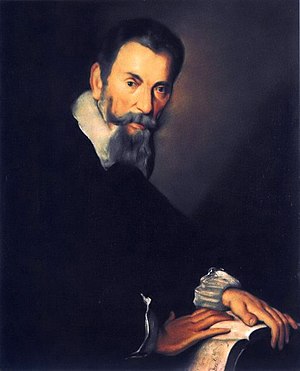
Così fan tutte, ossia La scuola degli amanti, K. 588, is an opera buffa in two acts by Wolfgang Amadeus Mozart. It was first performed on 26 January 1790 at the Burgtheater in Vienna, Austria. The libretto was written by Lorenzo Da Ponte who also wrote Le nozze di Figaro and Don Giovanni.
Raymond John Leppard was a British-American conductor, harpsichordist, composer and editor. In the 1960s, he played a prime role in the rebirth of interest in Baroque music; in particular, he was one of the first major conductors to perform Baroque opera, reviving works by Claudio Monteverdi and Francesco Cavalli. He conducted operas at major international opera houses and festivals, including the Glyndebourne Festival where he led the world premiere of Nicholas Maw's The Rising of the Moon, the Metropolitan Opera and the Royal Opera House. He composed film scores such as Lord of the Flies and Alfred the Great.
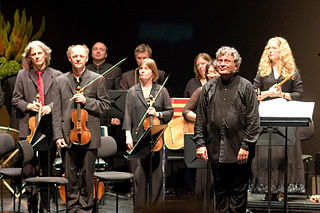
René Jacobs is a Belgian musician. He came to fame as a countertenor, but later in his career he became known as a conductor of baroque and classical opera.

Dame Janet Abbott Baker is an English mezzo-soprano best known as an opera, concert, and lieder singer.

Frederica von Stade OAL is a semi-retired American opera singer. Since her Metropolitan Opera debut in 1970, she has performed in operas, musicals, concerts and recitals in venues throughout the world, including La Scala, the Paris Opera, the Vienna State Opera, the Salzburger Festspielhaus, Covent Garden, Glyndebourne and Carnegie Hall. Conductors with whom she has worked include Abbado, Bernstein, Boulez, Giulini, Karajan, Levine, Muti, Ozawa, Sinopoli, Solti and Tilson Thomas. She has also been a prolific and eclectic recording artist, attracting nine Grammy nominations for best classical vocalist, and she has made many appearances on television.
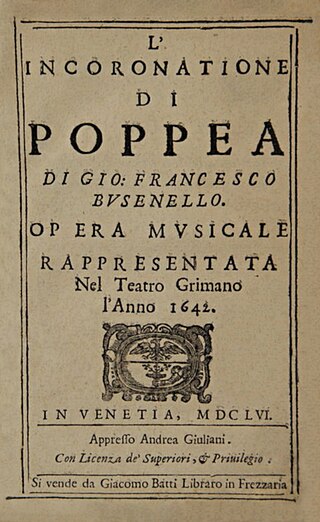
L'incoronazione di Poppea is an Italian opera by Claudio Monteverdi. It was Monteverdi's last opera, with a libretto by Giovanni Francesco Busenello, and was first performed at the Teatro Santi Giovanni e Paolo in Venice during the 1643 carnival season. One of the first operas to use historical events and people, it describes how Poppaea, mistress of the Roman emperor Nero, is able to achieve her ambition and be crowned empress. The opera was revived in Naples in 1651, but was then neglected until the rediscovery of the score in 1888, after which it became the subject of scholarly attention in the late 19th and early 20th centuries. Since the 1960s, the opera has been performed and recorded many times.

Magdalena Kožená, Lady Rattle is a Czech mezzo-soprano.

Ann Murray, is an Irish mezzo-soprano.
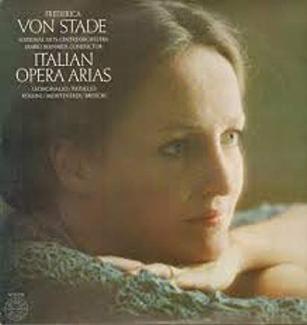
Italian Opera Arias is a 51-minute studio album of music performed by Frederica von Stade, Janice Taylor and the National Arts Centre Orchestra under the direction of Mario Bernardi. It was released in 1979.

Frederica von Stade: Chants d'Auvergne, Vol. 2 & Triptyque is a 60-minute studio album containing thirteen of the thirty traditional Auvergnat songs collected and arranged by Joseph Canteloube, together with a song cycle of his own composition, performed by von Stade and the Royal Philharmonic Orchestra under the direction of Antonio de Almeida. It was released in 1986. The same artists recorded Canteloube's seventeen other Auvergnat songs for the album's predecessor, Frederica von Stade: Chants d'Auvergne, Vol. 1, released in 1982.
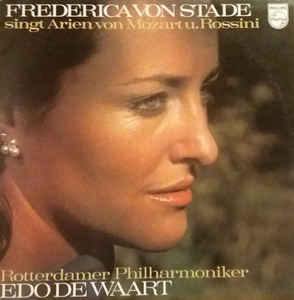
Frederica von Stade sings Mozart & Rossini Arias is a 52-minute studio album of operatic arias performed by von Stade and the Rotterdam Philharmonic Orchestra under the direction of Edo de Waart. It was released in 1976. A second, 69-minute version of the album, Frederica von Stade: Haydn, Mozart & Rossini Arias, released by Philips on CD, adds bonus tracks derived from von Stade's contributions to Antal Doráti's recordings of Joseph Haydn's operas La fedeltà premiata and Il mondo della luna. A third, 52-minute version released on SACD by PentaTone in 2005 reverts to the contents of the first version, but presents the music in quadraphonic surround sound.
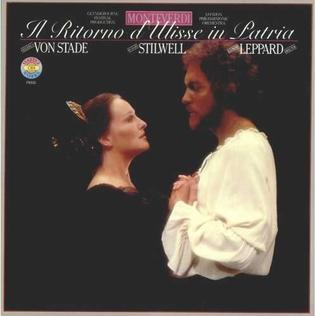
Il ritorno d'Ulisse in patria is a 166-minute studio album of Claudio Monteverdi's opera, performed by a cast of singers headed by Ann Murray, Patrick Power, Frederica von Stade and Richard Stilwell with the Glyndebourne Chorus and the London Philharmonic Orchestra under the direction of Raymond Leppard. It was released in 1980.
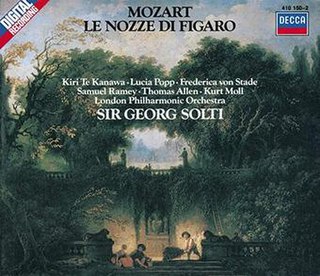
Le nozze di Figaro is a 168-minute studio recording of Wolfgang Amadeus Mozart's opera of the same name, performed by a cast of singers headed by Sir Thomas Allen, Jane Berbié, Yvonne Kenny, Philip Langridge, Kurt Moll, Lucia Popp, Samuel Ramey, Frederica von Stade, Robert Tear and Dame Kiri Te Kanawa with the London Philharmonic Orchestra under the direction of Sir Georg Solti. It was released in 1982.

Judith Blegen & Frederica von Stade: Songs, Arias & Duets is a 42-minute studio album of art songs, art duets and operatic arias performed by Blegen and von Stade with members of the Chamber Music Society of Lincoln Center. It was released in 1975.

A Midsummer Night's Dream is a 51-minute studio album containing the overture and most of the incidental music that Felix Mendelssohn wrote to accompany William Shakespeare's play of the same name. It is performed by Judith Blegen, Frederica von Stade, the Women's Voices of the Mendelssohn Club of Philadelphia and the Philadelphia Orchestra under the direction of Eugene Ormandy. It was released in 1977.

Mozart Mass K. 139 is a 45-minute classical studio album on which Mozart's Waisenhaus-Messe is performed by Gundula Janowitz. Frederica von Stade, Wiesław Ochman, Kurt Moll, the Chorus of the Vienna State Opera and the Vienna Philharmonic Orchestra under the direction of Claudio Abbado. It was released in 1976.

Dardanus is a 119-minute studio album of Jean-Philippe Rameau's opera, performed by a cast led by José van Dam, Michael Devlin, Veronique Dietschy, Christiane Eda-Pierre, Georges Gautier, Roger Soyer and Frederica von Stade with the Chorus and Orchestra of the National Theatre of the Paris Opera under the direction of Raymond Leppard. It was released in 1981.

Così fan tutte is a 178-minute studio album of Wolfgang Amadeus Mozart's opera, performed by Jules Bastin, Philippe Huttenlocher, Kiri Te Kanawa, David Rendall, Frederica von Stade and Teresa Stratas with the Choeurs de l'Opéra du Rhin and the Strasbourg Philharmonic Orchestra under the direction of Alain Lombard. It was released in 1978.
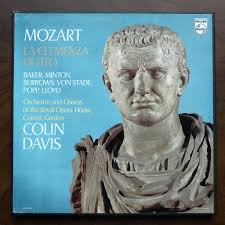
La clemenza di Tito is a 127-minute studio album of the opera by Wolfgang Amadeus Mozart, performed by Dame Janet Baker, Stuart Burrows, Robert Lloyd. Yvonne Minton, Lucia Popp and Frederica von Stade with the Chorus and Orchestra of the Royal Opera House, Covent Garden, under the direction of Sir Colin Davis. It was released in 1977.

Le nozze di Figaro is a 169-minute studio album of Wolfgang Amadeus Mozart's opera, performed by Christiane Barbaux, Jules Bastin, Jane Berbié, Ileana Cotrubas, José van Dam, Zoltan Kélémén, Tom Krause, Marjon Lambriks, Frederica von Stade, Anna Tomowa-Sintow and Heinz Zednik with the Chorus of the Vienna State Opera and the Vienna Philharmonic under the direction of Herbert von Karajan. It was recorded in April 1978 and released in 1979.


